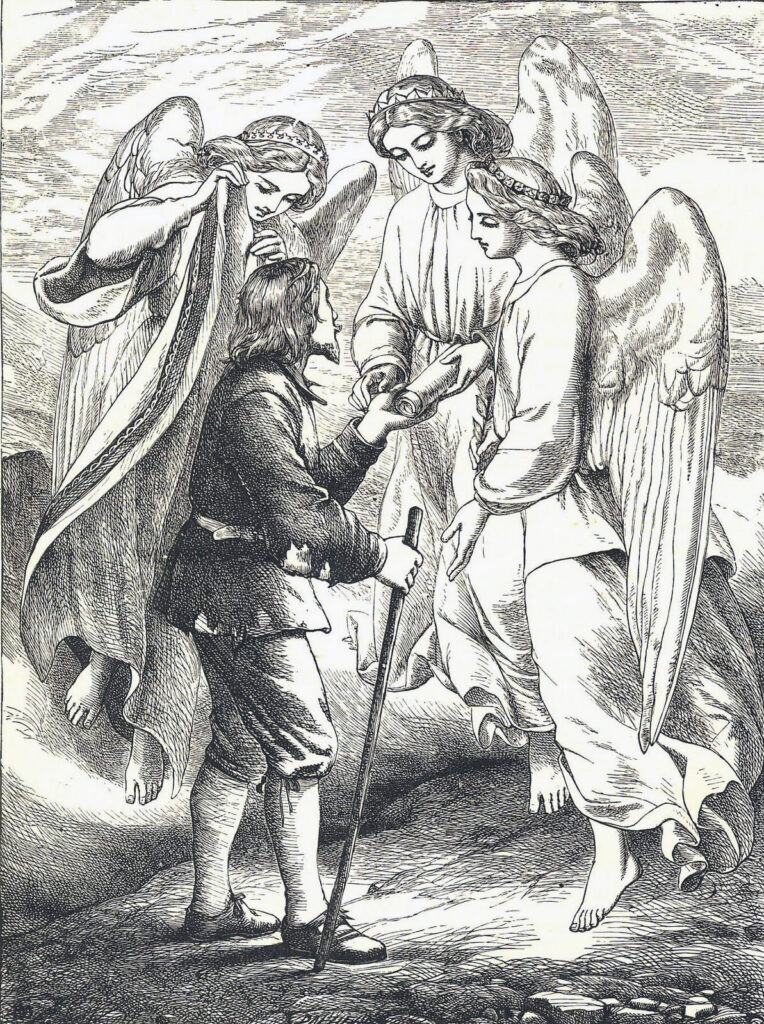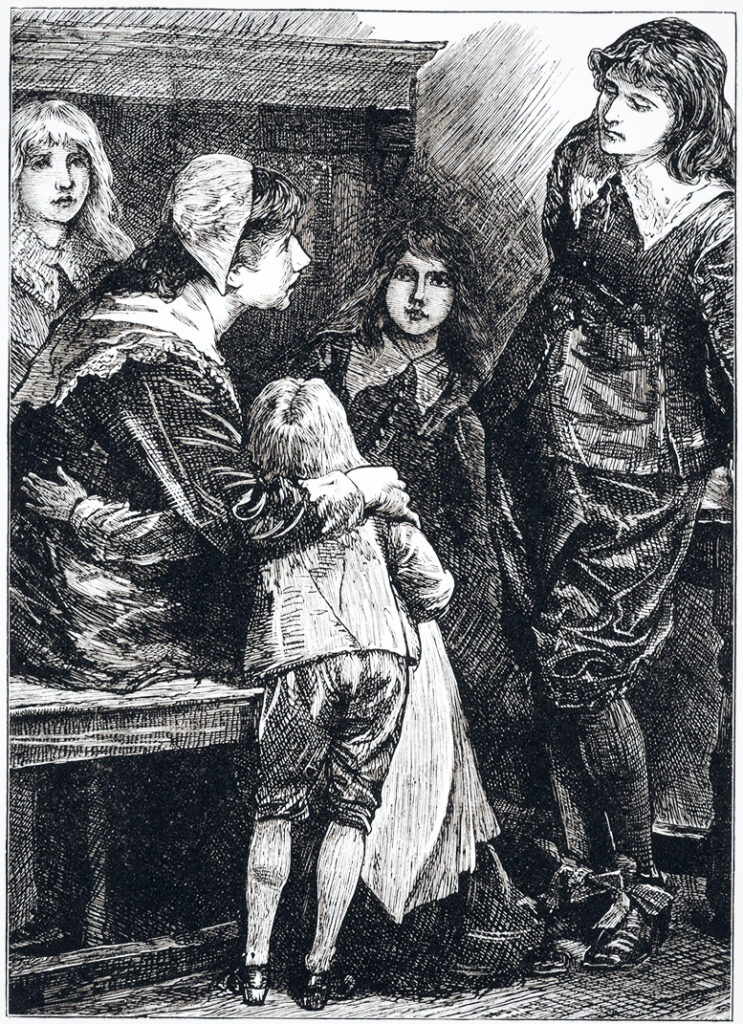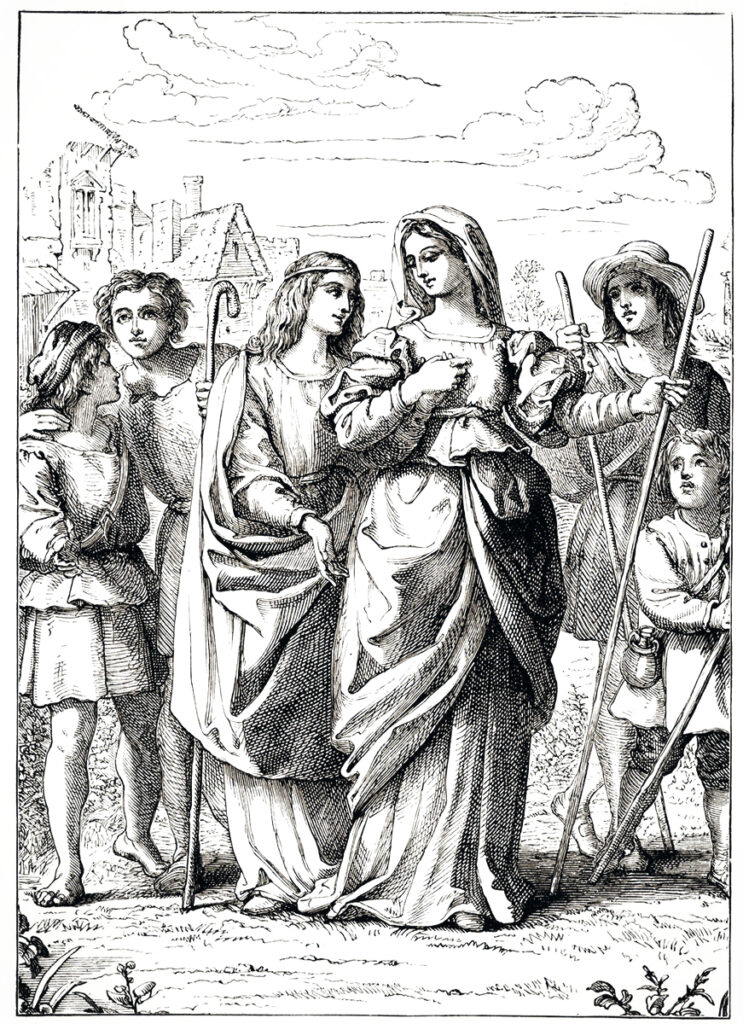Having read The Pilgrim’s Progress by John Bunyan, it is helpful to understand Bunyan’s background as the author of this widely-known book. The Pilgrim’s Progress is a long-time classic about living as a Christian throughout one’s lifetime. Pilgrim’s Progress is a comprehensive allegorical look at believers’ physical and spiritual hardships en route to Heaven, or in the Pilgrim’s case, the Celestial City. From the time of conversion to entry into the Celestial City, numerous detours, afflictions, and setbacks involved captivity and suffering unique to the Pilgrims in the story but still relevant to believers today. While each stage of the Pilgrim’s Progress is meant to mirror a believer’s faith journey, numerous scriptural principles are interwoven throughout the narrative. While believers at the time of Bunyan have a better way of relating to the setting and primitive nature of the story, the protagonist encounters still offer timeless lessons, warnings, and examples to follow.
Introduction
John Bunyan was a prominent English Puritan writer and devoted follower of Christ who lived during the 17th century. He was born in 1628 in Elstow, Bedfordshire, England. Bunyan’s family was of modest means, and his father, Thomas Bunyan, worked as a tinker, repairing pots and pans. Bunyan’s early life was marked by the turbulent events of the English Civil War, which erupted in 1642. He was raised in a period of political and religious upheaval, with the country divided between the Royalists and the Parliamentarians. As a young man, Bunyan served briefly as a soldier in the Parliamentary army during the war. After the war, Bunyan struggled with a deep spiritual crisis and feelings of guilt over his moral failings. He eventually found peace in the Puritan faith and became a committed follower of Christ in their vein of devotion and worship. Puritans pursued personal holiness and a strong work ethic and held to the absolute authority of the Bible.
In 1653, Bunyan joined a Puritan congregation in Bedford, England, led by John Gifford. This congregation consisted of Protestant Christians who refused to conform to the unbiblical practices of the Church of England, which was the State established church at the time. Bunyan’s religious convictions and objections to tradition led him to become a preacher, and he began delivering sermons and exhortations to fellow believers. However, in 1660, the political climate shifted with the restoration of the monarchy under King Charles II. The new government’s anti-Christian views were propagated through the Church of England, and Bunyan faced persecution for fellowship with other believers without the consent of the Church of England. He was arrested in November 1660 and spent twelve years in prison. Bunyan wrote The Pilgrim’s Progress during his imprisonment, published in 1678. The book, an allegorical tale of a Christian’s journey toward salvation, became immensely popular and remains a classic of English literature.
After his release from prison in 1672, Bunyan returned to Bedford and resumed activities befitting a Christian. He continued to write numerous other highly regarded works, including theological treatises, fictional novels, and spiritual reflections. Bunyan’s works have been in circulation throughout Christendom for centuries. Moreover, John Bunyan’s contributions as a writer and preacher made him one of the most influential figures of the Puritan movement. His works continue to be studied and deeply valued for their biblical insights, spiritual wisdom, literary value, and historical significance.
Review – Part I
“The Pilgrim’s Progress from This World, to That Which Is to Come” is an allegorical novel written by John Bunyan and published in 1678. Part The book has been widely translated and is considered one of the most significant works of English literature. In part 1 of the book, the story is centered on a man named Christian and his journey from his hometown, the “City of Destruction” (representing earthly existence), to the “Celestial City” (representing Heaven). The story begins in the City of Destruction, where a man named Christian lives. One day, he finds a book (the Bible) that warns of the city’s impending doom. Tormented by this knowledge and burdened by a heavy load (representing his sins), Christian leaves his wife and children to set off on a pilgrimage to the Celestial City, the only place of safety.
Along his journey, Christian encounters various characters who either aid or obstruct his Progress. Evangelist, the first character he meets, instructs him to head for the Wicket Gate, and there he will be told how to reach the Celestial City. However, he first mistakenly follows the advice of a character named Mr. Worldly Wiseman and heads towards the village of Morality to seek relief from his burden from a man named Mr. Legality. However, after much distress endured by Christian, Evangelist redirects him, setting him back on the right path toward the Wicket Gate. At the Wicket Gate, Christian is admitted by Goodwill who instructs him to follow the straight path and not to deviate. He journeys onward and reaches the House of the Interpreter, where he is shown various pictures and scenes that symbolize spiritual truths.
The journey is fraught with peril, and Christian passes through places like the Slough of Despond, where he almost drowns in the mire of his guilt and doubts, and Vanity Fair, a place of worldly temptations, horrific abuses, and deadly persecution. He climbs the Hill of Difficulty, survives the Valley of the Shadow of Death, and later fights the monster Apollyon (allegorical of Satan or a demon figure).
Christian also meets several other characters, such as Faithful and Talkative, who either represent good qualities or pitfalls along the spiritual journey. Faithful is martyred in Vanity Fair, showing the price of faith in the face of worldly opposition. Eventually, Christian and his new companion, Hopeful, come to the Delectable Mountains, which the Lord of the Celestial City owns. Here they are refreshed and warned of coming difficulties. They are shown sights such as a man who could look no way but downwards and the land of Conceit, which is ruled by a tyrant named Despair who holds people captive.
Christian and Hopeful continue their journey and are trapped by the Giant Despair in the Doubting Castle. However, Christian remembers he has a key called Promise, which opens any door in Doubting Castle, and they manage to escape.
Ultimately, Christian and Hopeful reach the Celestial City, but it’s only accessible by crossing the River of Death. Christian is initially afraid to cross but is encouraged by Hopeful. As they cross, Christian is nearly drowned by doubts and fears, but he makes it to the other side, where he is welcomed into the Celestial City, shedding his burden once and for all.
In essence, “Pilgrim’s Progress” Part 1 is an allegory for the Christian journey of faith from the burden of sin and destruction to salvation in the Celestial City, a representation of Heaven. The narrative explores themes of faith, persistence, and redemption through various trials, tribulations, and encounters.
Review – Part II
The Pilgrim’s Progress Part II continues John Bunyan’s allegorical narrative, following the journey of Christiana, Christian’s wife, who is motivated by her husband’s successful pilgrimage and the invitation from Evangelist to follow in his footsteps. She decides to journey to the Celestial City, taking her four sons and a neighbor, Mercy, with her. Although the core allegorical structure remains similar to Part 1 — a journey from the City of Destruction to the Celestial City — the narrative is expanded upon by including new characters and incidents, providing a more nuanced perspective on the Christian faith. Part 2 begins with Christiana, who, after receiving a divine revelation in a dream, regrets not having embarked on the journey with her husband. Convinced by her dream and her neighbor, Mrs. Timorous, Christiana decides to follow in Christian’s footsteps, taking their four sons (Matthew, Samuel, Joseph, and James) along with her.
In Part II, Bunyan expands on many themes from the first part, providing additional nuance and depth. He also introduces several new characters and emphasizes the role of women in the Christian faith, reflecting meaningful contributions complementary to the religious and social landscape of his time. Christiana’s journey begins when Secret, a divine messenger, delivers a letter to her. Inspired by the letter and disturbed by dreams of Judgment Day, she decides to set off for the Celestial City with her children. Accordingly, Mercy, Christiana’s young neighbor, asks to join her, despite knowing the journey could be perilous. However, Christiana and her group remain resolute and continue. The journey is not easy, and they have to navigate several challenges and obstacles, such as the Slough of Despond and the Hill Difficulty.
Like Christian in the first part, Christiana and her companions also stop at the Interpreter’s House, where they are given guidance and shown various allegorical pictures and scenes. The House proves to be a place of learning and reflection, helping travelers understand their spiritual journey better. The journey continues, and the group visits several significant sites, such as the Cross, the Sepulchre, and the Hill of Difficulty.
Under Great-Heart’s guidance, the group overcomes many physical and spiritual challenges. These include the fight with Giant Despair at Doubting Castle and the crossing of the Enchanted Ground. Through these trials, the pilgrims learn about the power of faith and the importance of perseverance. In contrast to the first part, the second part greatly emphasizes community and fellowship. Christiana’s group grows throughout the journey, welcoming new members like Standfast and Valiant-for-Truth. These characters contribute their unique insights, reinforcing the idea that all believers have a role in the body of Christ.
Finally, Christiana, Mercy, and the remaining group reach the River of Death, the final barrier before the Celestial City. Christiana crosses first and is joyously welcomed into the City. The others follow each greeted with a similar celebration. The journey of each pilgrim ends in successful entry into the Celestial City, marking the completion of their spiritual journey. “Pilgrim’s Progress Part II” is a rich and complex allegory detailing Christiana’s spiritual journey. Bunyan uses the characters and obstacles Christiana encounters to explore deeper themes of faith, perseverance, fellowship, and the nature of the Christian journey. In contrast to the first part, it provides a broader picture of the Christian experience, reflecting diverse experiences and insights.
Pilgrims’ Locations
- The City of Destruction: The journey begins here, which represents the unenlightened world. Christian is distressed by the burden (sin) on his back and is seeking salvation.
- Slough of Despond: Christian falls into this swamp of despondency and despair, which represents feelings of guilt and fear due to the recognition of sin.
- House of the Interpreter: Here, Christian learns important lessons through several visions and allegorical figures that Interpreter shows him.
- Cross and Sepulchre: At this point, Christian loses his burden (sin) at the sight of the Cross, symbolizing the redemption and forgiveness of sins through Christ’s sacrifice.
- Hill Difficulty: Christian’s faith is tested when he needs to climb this difficult hill.
- Palace Beautiful: Christian receives hospitality, rest, and further instruction in the Christian faith at this place, symbolizing the Church.
- Valley of Humiliation: Here, Christian faces and defeats the monster Apollyon, representing Satan.
- Valley of the Shadow of Death: Christian continues his journey through this treacherous valley, enduring dangers and darkness.
- Vanity Fair: This town represents the worldly temptations. Christian and Faithful, his companion by this point, are put on trial for their beliefs.
- Doubting Castle and Giant Despair: Christian and Hopeful, another companion after Faithful’s death, are imprisoned and tortured by Giant Despair, but they escape using the key of Promise.
- Delectable Mountains: These represent the joys and comforts of the life of grace. Christian and Hopeful are refreshed and receive more instructions for their journey here.
- Enchanted Ground: A dangerous place where drowsiness and laziness threaten to halt the pilgrims’ progress.
- Land of Beulah: This land represents spiritual abundance and rest before the final leg of the journey. Here, Christian and Hopeful prepare themselves for their crossing of the River of Death.
- River of Death: Christian and Hopeful cross this river to finally reach the Celestial City, symbolizing the passing from life into eternity.
- The Celestial City (Heaven): Christian finally reaches his destination, the place of eternal salvation and joy. He and Hopeful are welcomed with trumpets and a chorus of angels.















Comments are closed.